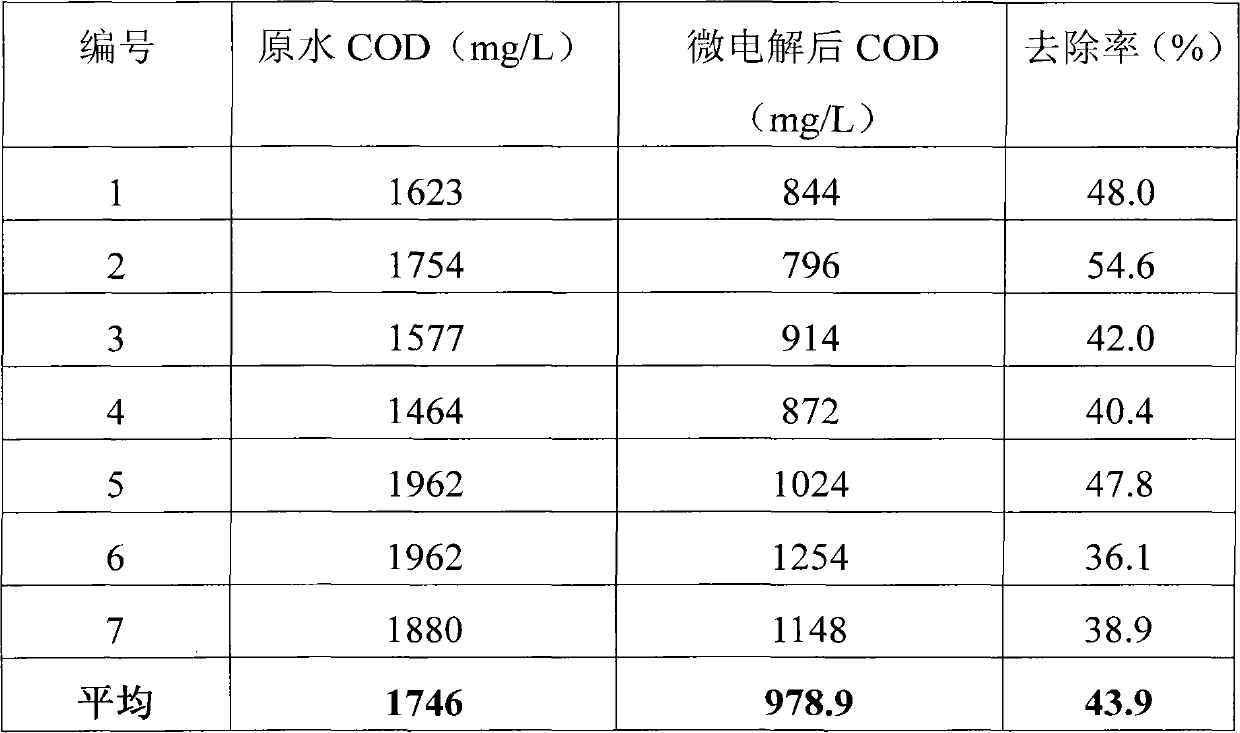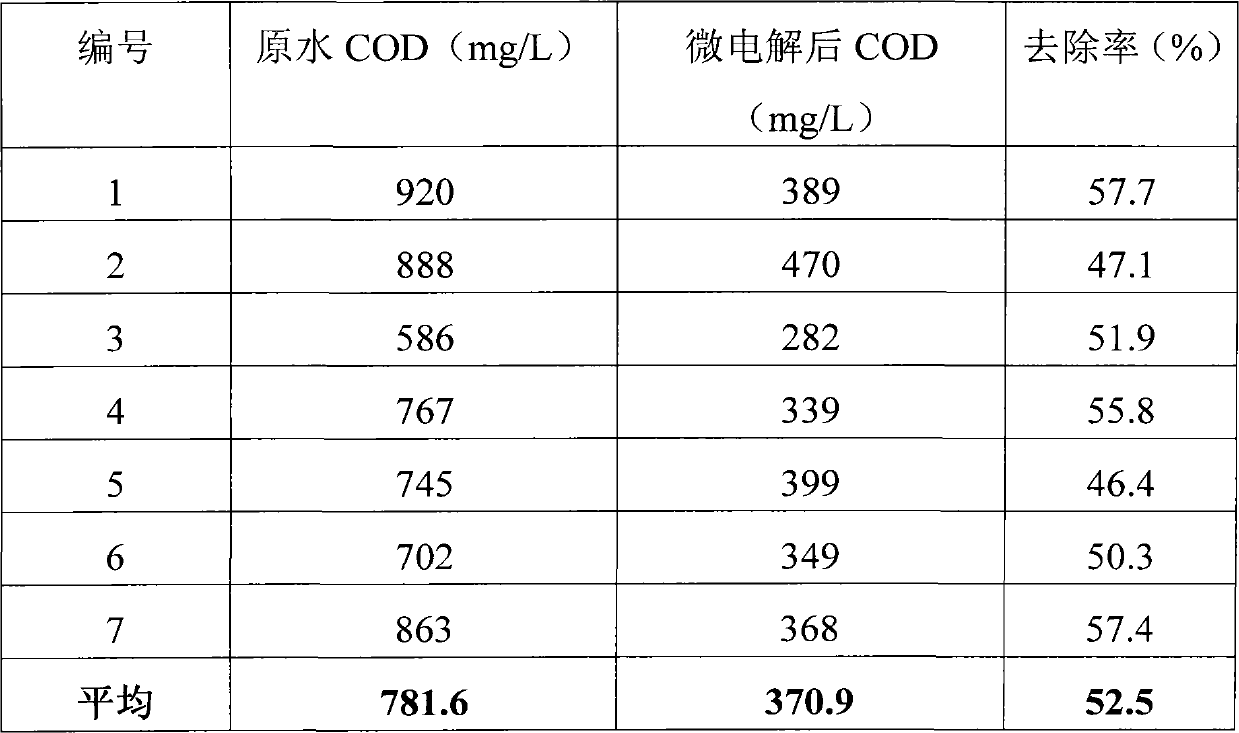Micro-electrolysis filling material and preparation method thereof
A micro-electrolysis, raw material technology, applied in chemical instruments and methods, water/sewage treatment, water/sludge/sewage treatment, etc., can solve the problem of easy passivation and hardening, high investment cost per ton of water, and inability to use micro-electrolysis for a long time Filling and other issues, to achieve the effect of facilitating shipment, reducing specific gravity, and stable treatment effect
- Summary
- Abstract
- Description
- Claims
- Application Information
AI Technical Summary
Problems solved by technology
Method used
Image
Examples
Embodiment 1
[0026] Get iron scraps and dry them at 200°C for 1 hour and then cool them through a 200-mesh sieve. Raw materials: scrap iron scraps 68%, activated carbon 22% and aluminum oxide 10% are mixed in cans (percentages are percentages of raw material mass), Enter the high-temperature furnace for reduction, heat up for 4 hours to 1080°C under anaerobic conditions, keep warm for 10 hours, cool down for 8 hours, and then come out of the furnace. After crushing, pass through a 200-mesh sieve to obtain micro-electrolytic fillers. Among them, iron content is 64%, activated carbon is 22%, alumina is 10%, and the balance is impurities. Performance indicators of micro-electrolytic filler: specific gravity: 0.9 tons / cubic meter, specific surface area: 1.2 square meters / gram, porosity: 52%, physical strength 1550Kg / cm 2 .
Embodiment 2
[0028] Take scrap iron scraps and dry them at 180°C for 1.5 hours, then cool them through a 200-mesh sieve, mix 70% scrap iron scraps, 21% activated carbon, and 9% sodium tetraborate into cans (the percentage is the percentage of the raw material mass), and enter Reduction in a high-temperature furnace, heating up to 1080°C for 4 hours under anaerobic conditions, holding the temperature for 10 hours, cooling down for 8 hours, cooling out of the furnace, crushing and passing through a 200-mesh sieve to obtain micro-electrolytic fillers. Wherein the iron content is 70%, activated carbon is 21%, sodium tetraborate is 8%, and the balance is impurities. Performance indicators of micro-electrolytic filler: specific gravity: 0.99 tons / cubic meter, specific surface area: 1.1 square meters / gram, porosity: 51%, physical strength: 1600Kg / cm 2 .
Embodiment 3
[0030] Take scrap iron chips and dry them at 180°C for 1.5 hours, then cool them through a 200-mesh sieve, and mix the raw materials: 60% scrap iron chips, 30% activated carbon and 10% silicon dioxide (the percentage is the percentage of the raw material mass) , enter the high temperature furnace for reduction, raise the temperature for 3 hours to 1180°C for 9 hours, keep the temperature for 9 hours, cool down for 10 hours, and then come out of the furnace. After crushing, pass through a 200-mesh sieve to obtain micro-electrolytic fillers. Wherein the content of iron is 59%, activated carbon is 30%, silicon dioxide is 10%, and the balance is impurities. Performance indicators of micro-electrolytic filler: specific gravity: 0.8 tons / cubic meter, specific surface area: 1.25 square meters / gram, porosity: 56%, physical strength: 1510Kg / cm 2 .
PUM
| Property | Measurement | Unit |
|---|---|---|
| particle size (mesh) | aaaaa | aaaaa |
| specific surface area | aaaaa | aaaaa |
| specific surface area | aaaaa | aaaaa |
Abstract
Description
Claims
Application Information
 Login to View More
Login to View More - R&D
- Intellectual Property
- Life Sciences
- Materials
- Tech Scout
- Unparalleled Data Quality
- Higher Quality Content
- 60% Fewer Hallucinations
Browse by: Latest US Patents, China's latest patents, Technical Efficacy Thesaurus, Application Domain, Technology Topic, Popular Technical Reports.
© 2025 PatSnap. All rights reserved.Legal|Privacy policy|Modern Slavery Act Transparency Statement|Sitemap|About US| Contact US: help@patsnap.com



